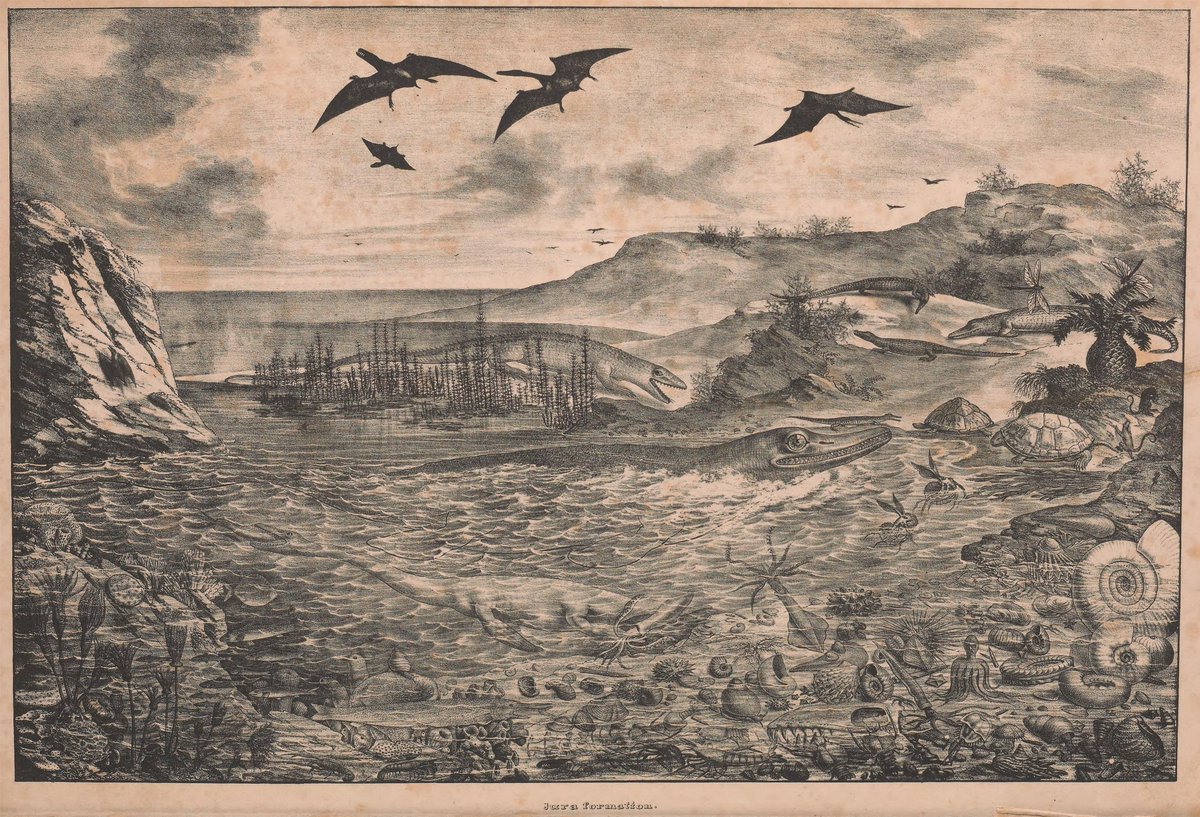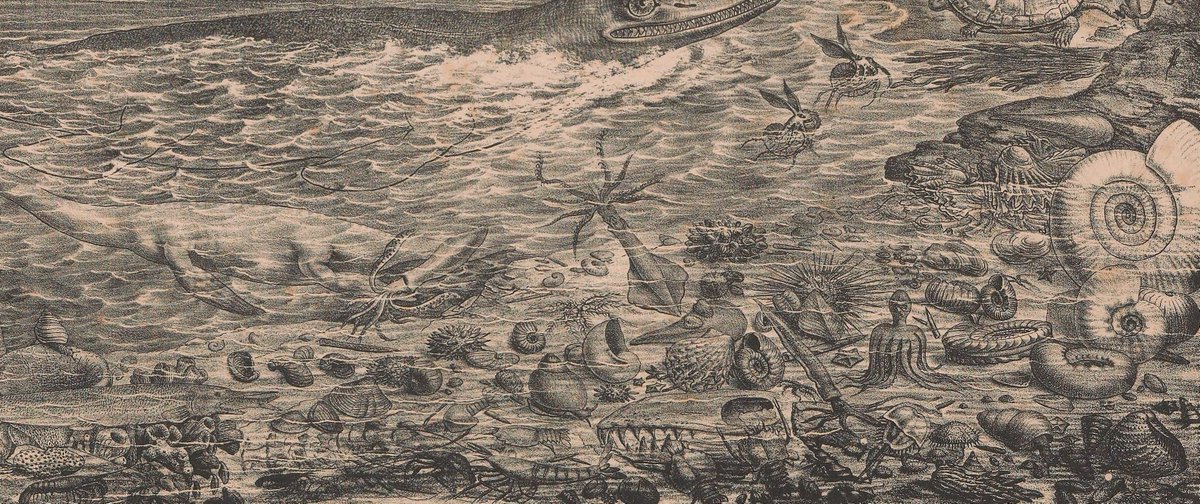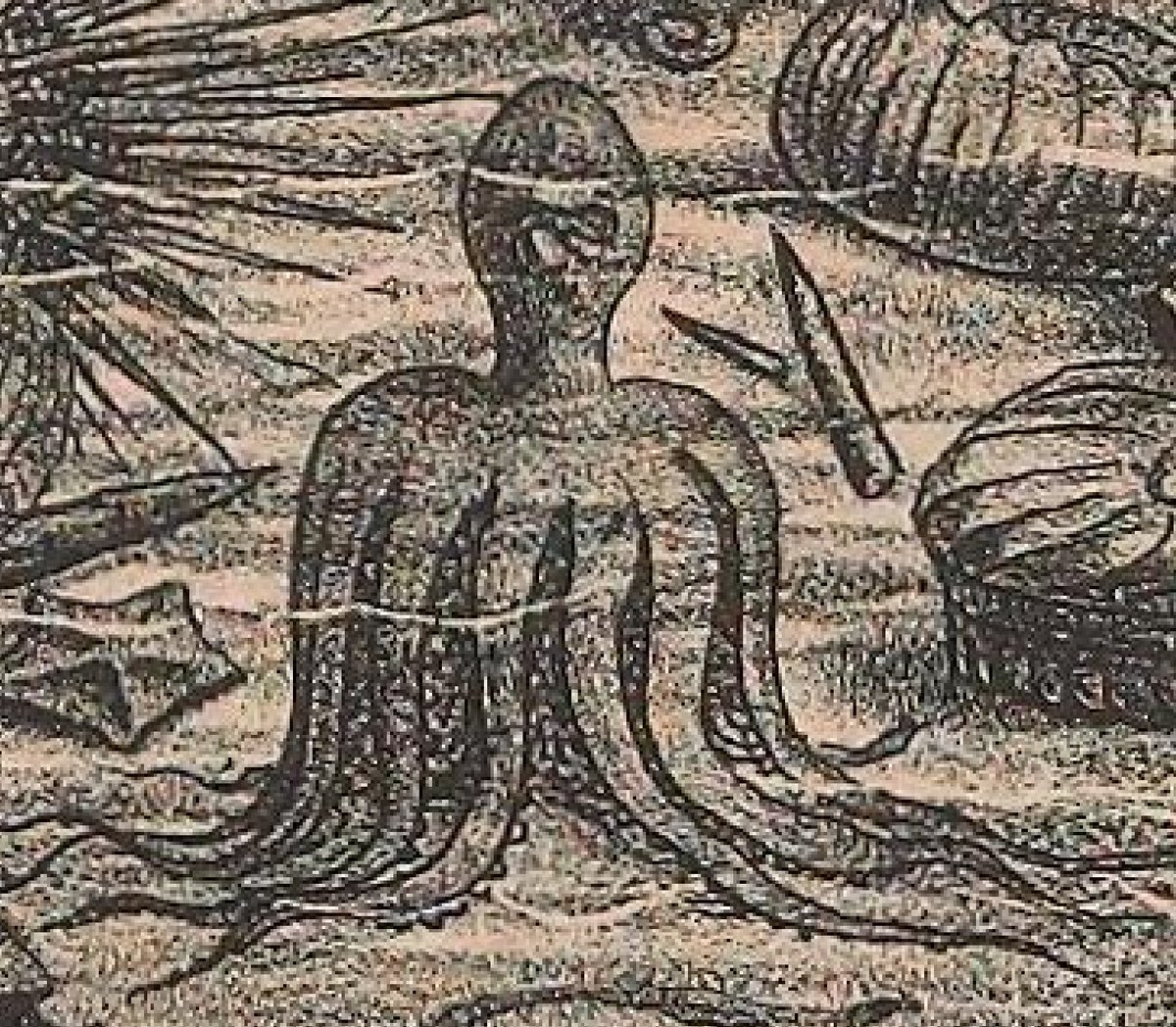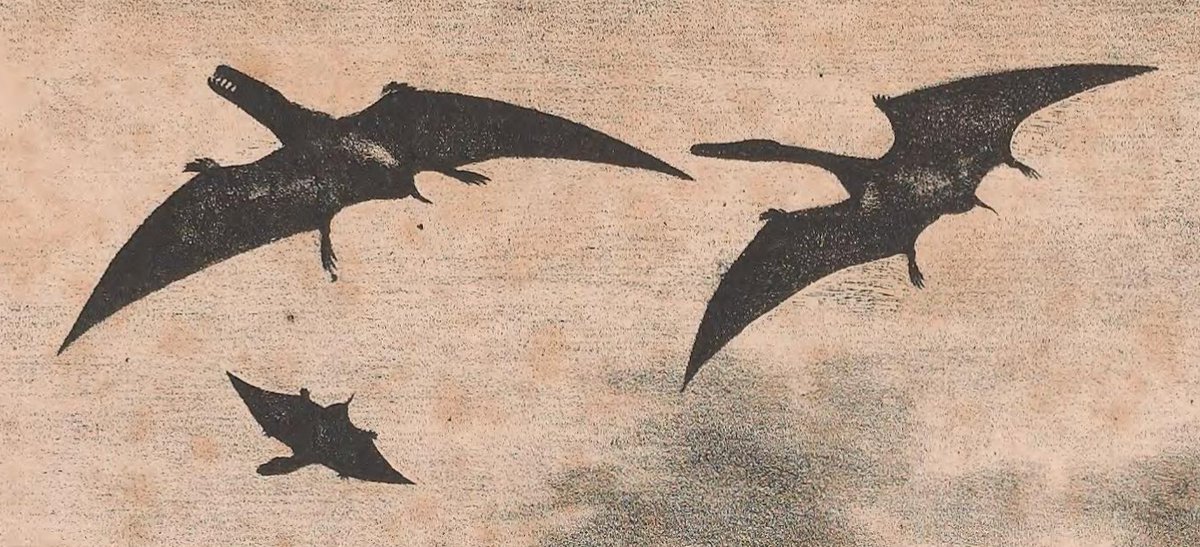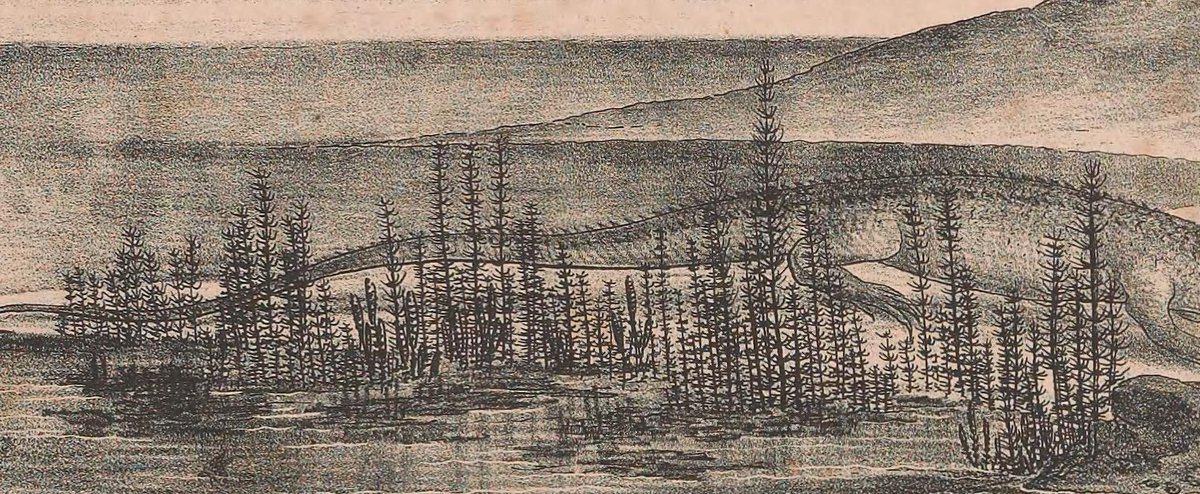Finally, a high-res version of this iconic image: August Goldfuss& #39; 1831 "Jura Formation", from Petrefacta Germaniæ. Undeniably influenced by Dura Antiquior, it has its own significance to #paleoart history - not the least for having the first dinosaur reconstruction. Thread...
For many, this is the meat of this piece: the lizard-like Megalosaurus. This is ground zero for dinosaur art, folks: the very first time someone put the artistic meat on the bones of a dinosaur fossil. It& #39;s nowhere close to reality of course, but we had to start somewhere.
The star of the show is Temnodontosaurus, which was - at the time - one of the largest reptiles known from the fossil record. The history of Temno. in 19th century art is quite interesting - it was everywhere. The T. rex of its day, you might say.
The huge number of invertebrates in the foreground is unusual and noteworthy. Petrefacta Germaniæ was a series of books cataloguing Goldfuss& #39; fossil collection, most of which were invertebrates. This reptile-dominated scene was actually pretty out of place in this context.
Maybe adding all these molluscs, crustaceans, echinoids, sponges etc. made the image more relevant and less of a way of getting more attention for the book series? (See Rudwick& #39;s "Scenes from Deep Time" for more info.) Note the weird octopus that I& #39;m sure is wearing sunglasses.
These little mammals are also interesting. They probably reflect mammals from the Stonesfield Slate, Oxfordshire. The jaws of these Mesozoic mammals were quite controversial in the 1830s, disrupting ideas of the development of life on Earth.
The scene is more relaxed than Duria Antiquior, but still contains some animal-on-animal violence, like this Plesiosaurus engulfing a (?)belemnite. Also note the continuation of the water surface texture across the entire water region: we aren& #39;t getting a DA-like underwater view.
The pterosaurs are neat, too. These aren& #39;t generic & #39;pterodactyls& #39;, but obviously meant to be (what we& #39;d eventually call) Scaphognathus and Pterodactylus. Scaphognathus is lacking its long tail, but we didn& #39;t know about that yet.
So, lots of cool stuff in this relatively obscure image (it& #39;s well known to people who look into this stuff, but rarely mentioned outside of scholarly contexts). Yes, it& #39;s a Duria Antiquior knock off, but also represents steps forward for early #paleoart.
Note that this image is 100% public domain, so feel free to share, use, upload to Wikipedia etc. It deserves wider recognition. The source for this excellent, free-to-use version is #page/8/mode/1up">https://www.biodiversitylibrary.org/item/201415 #page/8/mode/1up,">https://www.biodiversitylibrary.org/item/2014... where the entirety of Petrefacta Germaniæ is also available.

 Read on Twitter
Read on Twitter